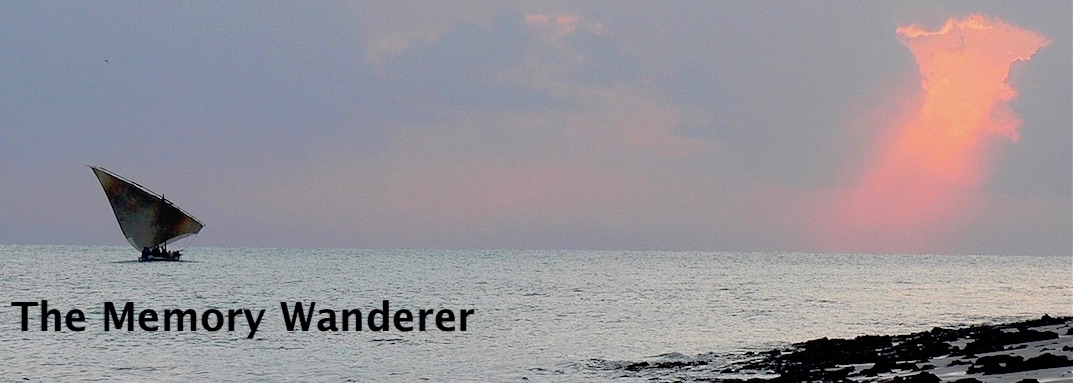The camera has become almost an extension to my body, fitting in to my hand and bouncing happily in its case against my hips - and I can draw it faster then Roy Rogers pulled a six-gun. I seems to me to be a perfect example of a machine making easily accessible to amateurs like me a great deal of very complicated technology.
Wednesday, April 24, 2024
Panasonic DMC-FZ200
Monday, April 22, 2024
So Many Homes
 |
| Upanga Road bungalow |
The other day I spent a few minutes counting up the number of places I have called 'home'. Before I started I tried to to define exactly what the term meant as a proper 'home' is more than simply a building in which one lives; there has to be a sense of belonging and, perhaps, of family living there too. I also excluded places where I had only stayed for a relatively short time, temporary residences where I hadn't developed a sense of belonging.
For the purposes of the count I divided my homes into those where the family element of it being a 'home' was that my parents lived there, and those in which Mrs MW made it 'home'. The first group started with the bungalow in Upanga Road which was home after my birth in the European Hospital, Dar-es-Salaam, and, via Mombasa and Sussex, ended with Gawthorpe, a big semi-detached house in the village of Guestling, near Hastings, which my parents had for a few years in the mid 1960s.
Excluded from this list were the two schools in England at which I was a boarder and various places I stayed during Christmas and Easter school holidays while my parents were in East Africa.
 |
| The flat in Stone, Staffordshire |
Homes made with Mrs MW started with the flat in Stone, Staffordshire, where we lived while I finished my degree and while Mrs MW taught at the local girls' Catholic school, an experience which she did not enjoy. These homes included the bungalow at Bernard Mizeki College, Rhodesia, where we lived for the three years we taught at the school; a chalet-dormer-bungalow in Ludlow, Shropshire; a bungalow in the grounds of Excelsior School in Kingston, Jamaica; a terraced house in a council estate in Basildon New Town, Essex; a big semi-detached house in Maldon, Essex; The Ferry Stores, in the village of Kilchoan, Argyllshire; two houses which we had built for us, Matenderere in Kilchoan and a bungalow in Golspie, Sutherland.
There were various other places in which we lived which I might have called 'home', but at all these the stays were of brief duration.
 |
| Matenderere is the left of the two houses. |
The list comes to a total of 22 places in which I have felt 'at home'. We only lived for a few months in a couple of them, and the longest we lived in any of them was Matenderere, where we spent over ten happy years.
When I first reached this total I was amazed.... and then horrified. How could I have allowed this peripatetic lifestyle to have happened? And, what effects has it had on my life and on the lives of those I hold dear?
Sunday, April 21, 2024
More Spring Firsts

We also had a distressing moment when we realised that....
....this oystercatcher wasn't dragging a wing to lead us away from a nest but had broken it.Thursday, April 18, 2024
A Wet Spring Walk

I stood in this damp, unexceptional clearing, with cold fingers of rain making their way down the back of my neck, and listened to the thrush's glorious song until a growing chill drove me on.
Despite Spring plodding along and the temperature staying well below 10C, there are a few interesting things to find though this part of Scotland must be far behind the rest of the country. The last of the scarlet elfcups are 'in flower' and we have a new spring flower to enjoy....Wednesday, April 17, 2024
A Walk to the Shops

Monday, April 15, 2024
Merlin
Sunday, April 14, 2024
Loch Lunndhaidh

To provide water for Golspie the loch's level has been steadily raised over the years by a dam at its southeast end which has recently seen....
....the addition of a footbridge and what appears to be parking areas. I'm not at all sure of the purpose of these as they're on Sutherland Estate land but it may be to offer improved access to the local fishing club which has the rights on the loch.We had hoped to see an osprey and, perhaps, the year's first wheatear but had to be satisfied with a rather smart meadow pipit and the songs of the skylarks hovering high above us.






















